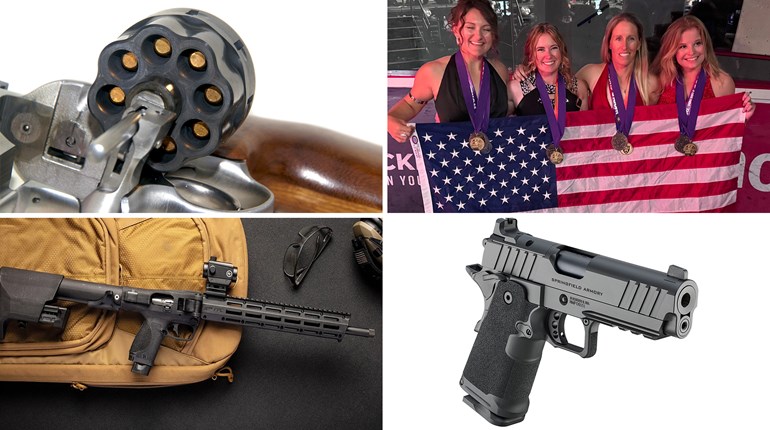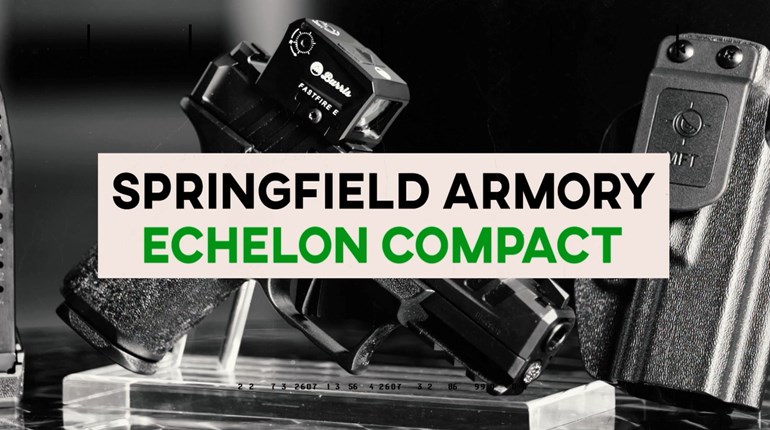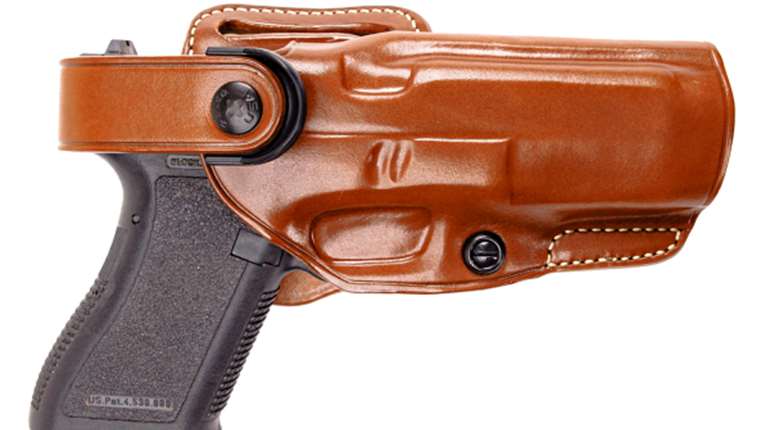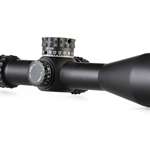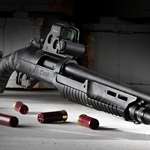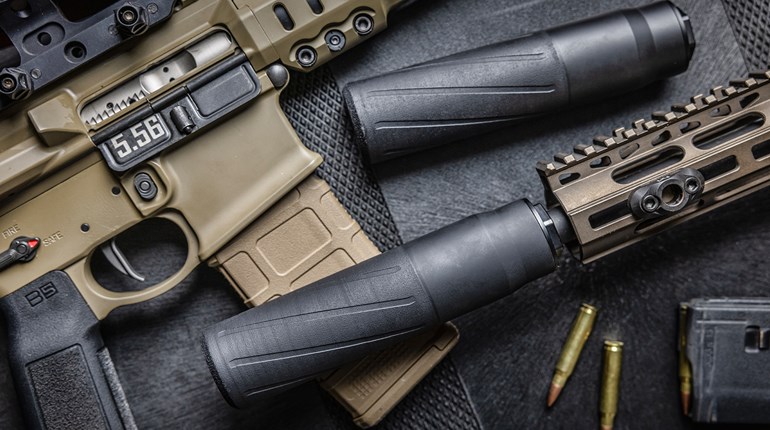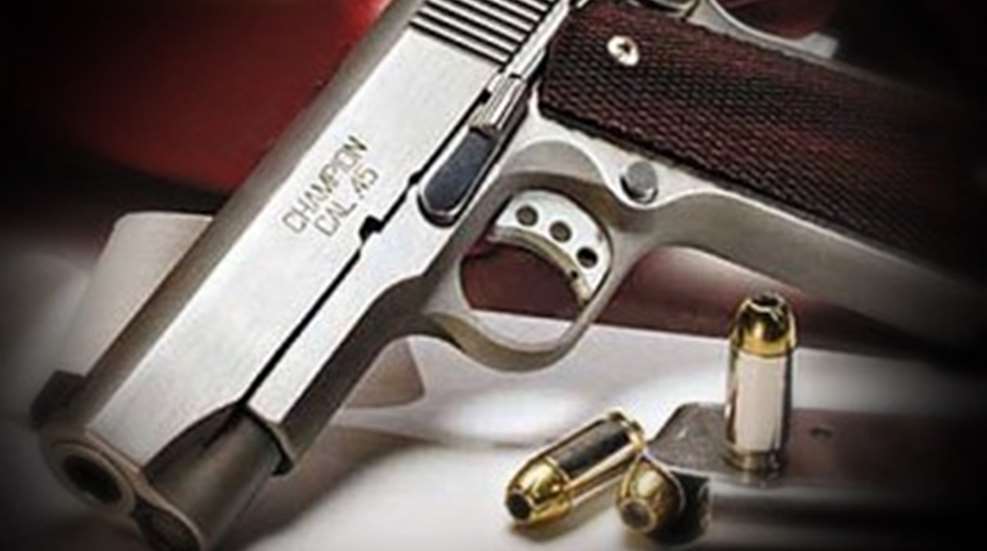
The middleweight fighter is a study in athletic versatility. At 160 pounds, this pugilist is much lighter than the heavyweight, yet much sturdier than a bantam. That versatility translates into a lethal combination of power and speed, brawn and agility—in short, epitomizes the complete fighter.
When it comes to handguns, Colt's Commander defines the universal definition of the sleek, strong, middleweight fighter. Arguably the largest 1911 variant that can be carried and concealed by the average person effectively and comfortably, the abbreviated barrel makes the Commander nimble. And with its full-size frame, like Sugar Ray Robinson in his prime, this middleweight gives up nothing in power, with a full seven cartridges of the standard, fight-stopping .45 ACP.
Of the many companies producing various clones of the 1911, like a blue-collar, Philadelphia gym, Springfield Armory turns out a stable full of fighters. But pound-for-pound, the Champion, Springfield's version of Colt's original Commander, holds the title belt as the company's best sidearm. In other words, if you only own one Springfield 1911, make it a Champion.
Like any gritty fighter, Springfield's Champion has its history, and this story turns the pages back to the early days of the bloody Revolutionary War. Under the direction of Gen. George Washington, America's first national armory began to take shape—forged under fire, the Springfield name was born.
The first muskets were produced for a new nation in 1794. Over much of the next two centuries, the Springfield Armory name found itself stamped into the very fabric of Americana. Muskets and rifles protected a fledgling nation through its infancy. Along the way, the Armory ramped up production of Browning's wonderful 1911 as well, and generations of men fought in every clime and place with a Springfield.
But on a fateful spring morning in 1968, under the order of Secretary of Defense Robert McNamara, America's most famed arsenal ceased operation and officially closed its doors forever.
But not long after the doors closed, a funny thing happened. While the Armory itself began its transition into a museum, a Texas firm acquired the copyright to the Springfield name. However, money problems followed, and in 1974 the Reese family purchased not only the Springfield Armory name, but also the original idea to produce a civilian version of the M14. Like the phoenix rising from the ashes, Springfield Armory was firing its guns once again.
Dubbed the M1A, Springfield's signature arm was a semi-automatic version of the M14, a rifle built using GI parts with a Geneseo-built receiver. The Illinois-based company next produced an M1 Garand, FN FAL (SAR 4800) and an HK 91 (SAR-8). These rifles quickly established Springfield Armory as a company that produced quality, affordable, military-style arms built with the competitive shooter in mind.
Then in 1985, Springfield finally stepped into the handgun ring and produced, what else, but a 1911. In a market that was quickly becoming crowded, Springfield's 1911s garnered praise almost immediately. Built with steel frames and slides drop-forged in Brazil and assembled in Illinois, the original pistols were pure GI, lacking firing pin safeties and utilizing solid barrel bushings. No less than Jeff Cooper himself quickly fell under the spell of the crossed cannons, ultimately basing his vaunted Gunsite pistols on the Springfield guns. Not since World War II had the Springfield banner flew so high.
Today Springfield's line of 1911s is one of the most diverse available on the market. The very heart of the line centers on the custom features included on the signature Custom Loaded pistols. Like any good gun, Springfields start with a quality barrel—this one hammer-forged, air-gauged and match quality. The Champion models go one step further with ramped, fully supported barrels, as do alloy-framed models, to ensure reliability despite the abbreviated slide. An extended beavertail grip safety, ambidextrous thumb safety, adjustable trigger and dual-captive recoil spring assembly provide true custom features to the Custom Loaded line—features that once came only by paying a hefty price. For those who carry, Novak patented Lo-Mount tritium rear sights and Springfield's carry bevel treatment aid in both low-light target acquisition and a snag-free draw, virtues paramount for any carry sidearm.
A major concern in the modern handgun world is safety. While some collectors or old-school shooters cringe every time they hear about integral-passive safeties, many of today's safety features are actually quite unobtrusive. Springfield's version, which it calls the Integral Locking System (ILS), is especially clever. The ILS replaces the mainspring housing of traditional 1911s, and is available as a kit to retrofit older models. To activate the ILS, simply place the two-teeth key into the corresponding holes on the mainspring housing. With the gun unloaded and the hammer down, turning the key clockwise totally locks up the gun. The slide and hammer are now both locked into place. Visually, shooters can see if the ILS is activated by the position of the two key holes. Stacked vertically signals a live firearm; horizontal holes show a gun that is locked. It's a very easy-to-use system, and one that works. Best of all, for those who don't care for such safeties, the system really does little to alter the overall cosmetic appeal of the pistol.
Since 2001, Springfield has also included a loaded-chamber indicator on all of its 1911 pistols. Simply a slot cut in the portion of the barrel exposed through the ejection port when the slide is in battery, it is a worthwhile function until operating under low-light conditions.
But for the Champions, as impressive as all of Springfield's Custom Loaded features are, I like this model for what it doesn't have—a full-length guide rod. Why it has become so en vogue for full-size 1911s to have this overrated "upgrade" I'll never know, but what you supposedly gain in vibration control and reliability you give up ten-fold in terms of field expedience. I'll trade for a gun I can fully break down without tools every time. No silly Allen wrench to mess with; no cumbersome barrel bushing to wrestle.
The full-length guide rod essentially does two things: it makes the warhorse an absolute bear to take apart and adds to the cost. I have never seen conclusive proof to a guide rod aiding in reliability, save for possibly a compensated model. A good magazine will do more to aid reliability than any guide rod you can ever install. With the Champion, even the basic chore of cleaning the pistol becomes simpler than with the traditional guide rod.
Custom features and subjective particulars aside, the Champion excels because of its simplicity in design.
Take the most famous duty gun ever made, chop an inch off its barrel, retain the standard grip frame and magazine capacity and suddenly you have an arm with superior versatility. It's true an Officer's Model is much more concealable, but three problems arise with this version. The small grip frame makes controlling .45 ACP recoil difficult, magazine capacity is reduced, and accuracy deteriorates appreciably with the 31⁄2-inch barrel. The full-size model alleviates all of these concerns until you try to conceal it. Unless you are a duty cop or assigned to a Marine Expeditionary Unit (Special Operations Capable), it's tough to justify a tactical thigh rig as an accessory to your work attire. With standard magazine capacity and a 5.6-inch sight radius, the Champion provides the happy medium.
Springfield currently offers two versions of the legendary Commander. The Loaded Champion Lightweight features an alloy, OD green frame, with a blued, steel slide and black rubber grips. It weighs 28 ounces. The Stainless Steel model is very similar to the Lightweight, with the obvious exception of the stainless steel finish and wood grips. For those looking for a more traditional looking wood and blued model, the Springfield Custom Shop offers a Champion on its Custom Carry model. Available with a steel or lightweight alloy frame, this is probably the best looking Champion Springfield makes, but expect to pay a bit more for the Custom Shop features that come with it. I know several fellow editors who own Springfield Custom Shop guns; I have never heard a complaint.
Ultimately, the Champion is much more than just the middleweight. It's the one gun that can do it all. From 25-yard plinking to the 7-yard gunfight, the 4-inch barreled Champion is versatile enough to excel. Easier to conceal than the full size, yet more controllable, accurate and more ammo available than with the compact—it can stand in the ring with anything else out there. And while there are plenty of worthy polymer and steel double-action guns on the market today, well, none of them have the soul of the timeless 1911. Polymer and steel are certainly with us forever, as they represent great technological advancements in pistol making. But there's just a certain type of allure that seems to radiate from a good 1911, much the way a great fighter does when he steps into the ring. This Champion is one such model. Pound-for-pound, it's the best game in town.
Springfield's stable of fighters is chock full of contenders in every class, but since the company first began producing 1911s, it's been the heavyweights, the full-size warhorses, that have garnered all the attention.
During a meeting with Springfield personnel some time ago, company representatives asked NRA staff editors what we thought they should see as new products. Several suggestions were given, but the one I offered has now finally come to fruition. Not a completely new entry, Springfield's Tactical Combat Black Stainless full-size 1911 is actually a slightly modified version of a gun that had flown under the radar for some time. Gone are the Bomar sights of the original Black Stainless; Novaks are now standard. Also gone are the stainless steel magazines with slam pads.
The Tactical Combat Black Stainless is no-nonsense full-size Springfield 1911. It lacks all the ambidextrous accessories common on many semi-custom guns. What it does have, though, is attitude. A mean-looking version of old slabsides to be sure, the gun backs it up on the firing line. The Tactical Combat Black Stainless produced several 2- to 21⁄2-inch groups during testing. And it had the feel that only a full-size 1911 can deliver. With a suggested retail of $877, the Tactical Combat Black Stainless is an enviable choice for anyone looking for a full-size 1911.













